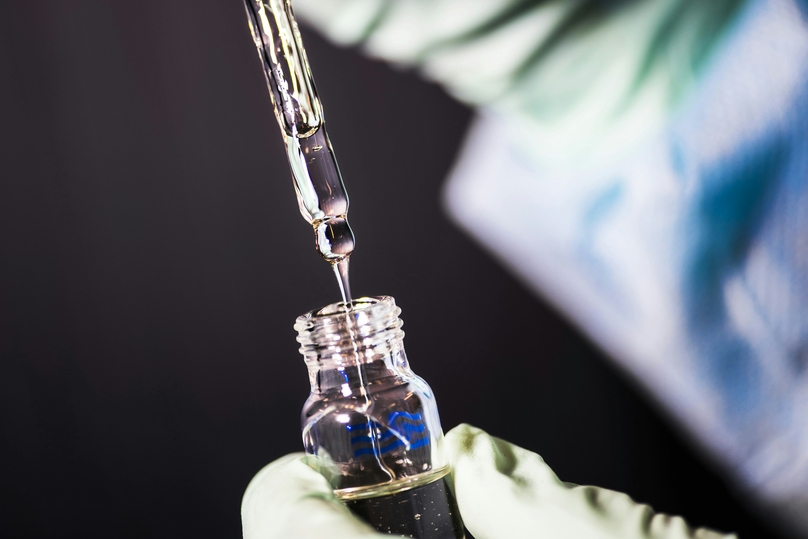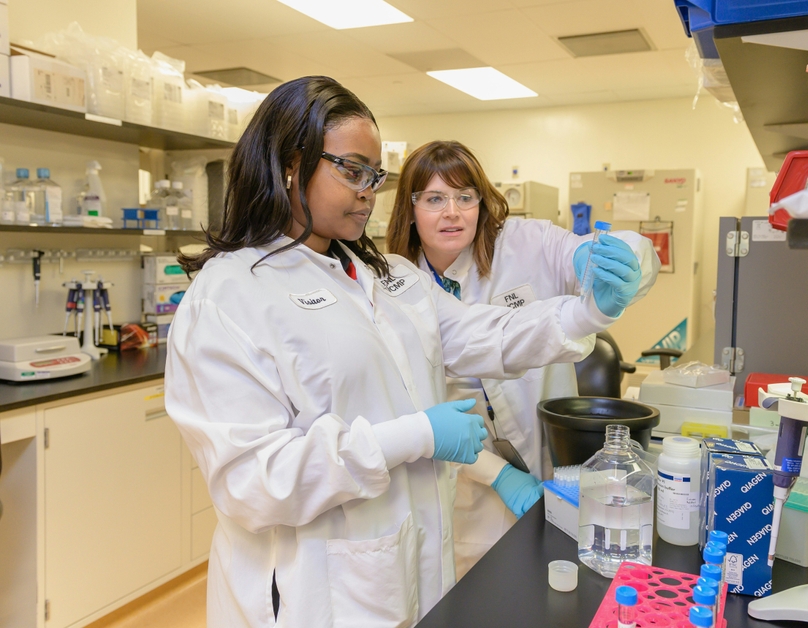Scaling up bioprocesses from the lab to industrial production is a multifaceted and demanding task essential to pharmaceutical development. At its core, bioprocess scale-up aims to make biotech products commercially viable by transforming a promising lab concept into a market-ready product. This process relies on replicating and optimizing lab-scale performance to achieve similar success at larger volumes.
Challenges in Scaling Up Bioprocesses
The transition from bench to pilot scale is a crucial milestone, demanding meticulous planning, comprehensive process optimization, and vigilant monitoring to ensure product quality and consistent performance.
Pilot-scale production is often seen as a make-or-break stage due to the inherent physical differences between scales, where factors like oxygen transfer, heat management, and mixing become significantly more complex. During this stage, in-depth knowledge of both the biology of the organism and the technical requirements of the equipment is crucial. Creating scalable parameters that build confidence for larger, clinical production is essential in the path to commercial success. However, the transition to large-scale production introduces unique challenges, as researchers must carefully navigate both the physical and chemical limitations within the system.
This raises a pivotal question: what makes scaling to a pilot level so complex?
Among the primary hurdles are maintaining consistent processes, achieving the desired product quality, and ensuring economic viability. Central to these efforts is the selection of a suitable bioreactor, as it plays a crucial role in shaping product yield, quality, and stability. Additionally, efficient optimization of microbial processes is paramount, given that microbial systems can behave unpredictably when moving from controlled laboratory settings to industrial-scale conditions. In scaling up, the environment for microorganisms drastically changes, influenced by fluid dynamics that intensify with scale, especially as turbulence becomes more prominent. So, for a pilot plant to be truly effective, it must establish a stable, cost-effective, and reliable process that not only meets stringent quality standards but also transitions smoothly to large-scale production. Yet, overcoming the challenges of scaling up bioprocessing is no small feat. The key to achieving this lies in advanced software tools that enable real-time monitoring of essential parameters, such as temperature, pH, and oxygen transfer rates.
Importance of Digital Solutions: Through digital transformation with computational modeling and simulation (CM&S), the scale-up process becomes significantly more efficient. CM&S accelerates project timelines without compromising quality, enhances equipment performance, reduces waste, and strengthens both profit margins and market positioning. For biotechnologists, CM&S offers a more sustainable, streamlined approach, transforming scale-up and upstream production by allowing rapid optimization of mixing tank and bioreactor designs—eliminating the need for costly and time-intensive physical trials and opening new doors for innovation.
If you're diving into the world of scaling up bioprocessing, the following methods are your roadmap to success. They can help streamline and enhance the process, paving the way for greater efficiency and innovation.
Method 1 – Optimizing Process Design for Scalability
Optimizing the production efficiency of a bioprocess involves a scale-down approach with four interconnected steps. First, large-scale conditions are analyzed to understand the dynamic environment in which microorganisms operate. These conditions are then translated into laboratory-scale models, allowing for tests that closely replicate large-scale environments. These tests help identify optimal strain and environmental combinations for improved efficiency. Finally, successful findings are applied back to the large scale, ensuring a seamless transition from laboratory to full-scale production.
To design an effective small-scale model for the scale down approach, it is essential to replicate key functions and environmental conditions expected at a larger scale. This replication requires careful alignment of operational ranges to reflect full-scale process conditions. For example, while fill times might be 20 minutes at a small scale, they may extend to two hours in large-scale operations. Testing verifies that the small-scale model accurately simulates larger bioreactor conditions, including critical factors such as mixing, mass transfer, and metabolic rates, ensuring that variables like fill times and mixing speeds align with full-scale expectations. Once the small-scale model is selected, it must undergo rigorous calibration and validation through controlled experiments to confirm its accuracy.
Role of Standardization: Standardization plays a pivotal role in ensuring smoother transitions from bench to pilot and eventually to commercial production. Establishing uniform protocols helps companies navigate the uncertainties that naturally arise in scaling by providing step-by-step guidelines for each development stage. Early identification of critical process parameters (CPPs) and quality attributes (CQAs) strengthens the foundation of these standardized protocols, fostering a robust process designed to consistently meet quality expectations. Standardized designs and assembly techniques also streamline operations, making scale-up smoother and more reliable.
Data-Driven Approaches: Data-driven tools and real-time monitoring systems, which use sensors to track parameters like temperature and pH, play an increasingly significant role in identifying and addressing bottlenecks. By predicting process dynamics during scale-up, these models reduce variability and enable proactive adjustments before moving to larger scales.
Method 2 – Leveraging Automation and Digitalization
Automation in bioprocessing has swiftly evolved from concept to practical application, driven by recent technological advancements. Tools like robotic process automation (RPA) enable rapid, consistent task execution, significantly reducing manual labor and minimizing the risk of human error. The integration of artificial intelligence (AI) with these tools further enhances operational efficiency by providing predictive analytics and adaptive control strategies that dynamically respond to process changes. For optimal results, it is essential that automation solutions are carefully tailored to their intended purposes and execute tasks with the same precision and quality as trained professionals.
Supporting these technological advancements, digitalization in bioprocessing—particularly through cloud-based Laboratory Information Management Systems (LIMS) and Electronic Lab Notebooks (ELN)—facilitates efficient data collection and analysis. These digital tools provide seamless data access from multiple locations, encouraging collaboration among research teams and streamlining workflow efficiency. Cloud-based solutions also reduce the need for physical infrastructure, yielding cost savings and improving data integrity with automated backups and robust security protocols. Additionally, automation optimizes resource management by streamlining the use of materials and reagents through automated inventory systems, which monitor stock levels and usage patterns to minimize waste and ensure efficient resource allocation. Together, these innovations drive greater efficiency, accuracy, and resilience across bioprocessing operations.
Method 3 – Integrating Scalable Equipment and Technologies
When choosing equipment for scalable production, consider key factors to ensure efficient performance at both small and large scales. Start with modular equipment that can adapt to varying production requirements. Seamless integration with existing workflows and bioprocessing techniques is essential for smooth scaling. Assess equipment based on critical performance metrics like oxygen transfer rates (OTR), mixing efficiency, and heat transfer to match process demands across different scales. Select user-friendly options that minimize training needs, easing the transition for staff. Finally, prioritize equipment that adheres to industry standards and regulatory guidelines to ensure quality and compliance.
It is important to recognize that scalable equipment is just one piece of the puzzle; we must also turn our attention to the emerging technologies that are paving the way for the future of bioprocessing. In the journey of scaling up, a comprehensive understanding of bioreactor characteristics at various scales becomes essential. Modern bioreactors, such as the ambr250 and BIOSTAT STR, can accommodate volumes ranging from 250 mL to 2,000 L, offering flexibility across scales. These bioreactors are equipped with advanced monitoring systems that enable real-time adjustments of critical parameters like pH and oxygen levels, ensuring optimal conditions for various cell types. Over the past three decades, stainless-steel stirred-tank bioreactors have become the gold standard, particularly due to their proven ease of scale-up. Their well-established design principles have consistently demonstrated success in development and scaling to robust, safe commercial processes.
Single-Use System: Traditional bioprocessing systems, which rely on reusable equipment such as tanks, filters, and tubing, carry the inherent risk of cross-contamination between batches, even with rigorous cleaning procedures. This challenge has prompted the industry to seek alternative solutions. In response, the industry has embraced single-use systems, which offer a solution by employing sterile, pre-validated disposable components that are used once and discarded, significantly reducing the risk of contamination and streamlining operations. Traditional systems also require time-consuming, resource-heavy processes like cleaning, sterilization, and validation after each use. Although single-use components may have a higher initial cost, they can offer long-term savings by eliminating the ongoing expenses associated with cleaning and maintaining reusable equipment. This shift towards single-use technology is driven by the need for greater efficiency, flexibility, and cost-effectiveness in the biopharmaceutical industry.
High-throughput screening (HTS) is another emerging technique in biological sciences that enables rapid and cost-effective screening of vast chemical libraries. With the growing number of potential compounds to test, pharmaceutical companies have embraced HTS methods to quickly identify the most promising candidates that show activity against specific biological targets. HTS typically incorporates automation, such as liquid handling robots, and miniaturization technologies like 1536-well plate formats, alongside large-scale data analysis techniques, including artificial intelligence. This approach facilitates the automated profiling of drug activities through highly specialized biochemical assays, streamlining the drug discovery process.
Method 4 – Ensuring Compliance and Data Integrity
The regulatory framework for scaling up bioprocessing is complex, with a wide range of compliance requirements that organizations must meet to ensure successful product development. Central to this is the adherence to good manufacturing practices (GMP), which establish rigorous standards for quality control, documentation, and operational procedures, all aimed at ensuring the safety and effectiveness of the final product. Failure to comply with these standards can lead to costly delays in product approval and substantial financial penalties.
Moreover, the scale-up process itself requires thorough validation to confirm that it consistently produces the intended product with the necessary quality. Achieving this compliance also involves managing extensive data accurately and traceably, guided by the ALCOA+ principles: data must be Attributable, Legible, Contemporaneous, Original, Accurate, and complete. This framework helps organizations maintain high standards of data integrity throughout the product lifecycle. To support this, many companies are adopting automated and cloud-based solutions for data collection, storage, and analysis, enabling real-time monitoring and easing compliance with regulatory standards. Routine audits of data management practices are crucial to uncover and address any vulnerabilities, while ongoing staff training ensures that all employees fully understand the importance of data integrity and regulatory compliance.
To further safeguard quality, implementing risk assessment tools like Failure Mode and Effects Analysis (FMEA) is essential for identifying potential risks in the manufacturing process, allowing teams to prioritize these risks based on their potential impact on product quality and business continuity. Throughout the scale-up process, comprehensive documentation is vital, as it ensures both traceability and regulatory compliance. Detailed records of all procedures, changes, and validations during scale-up must be meticulously maintained. Finally, fostering collaboration among departments such as quality assurance, production, and regulatory affairs supports a holistic approach to compliance, allowing potential issues to be identified and resolved early in the process.
Method 5 – Enhancing Collaboration and Communication
When teams work in isolation, their creative potential is limited, hindering innovation. Recognizing the importance of creativity in maintaining competitiveness, leading companies prioritize collaboration over siloed work.
Cross-Functional Teams: Cross-functional teams include scientists, engineers, and operations professionals, who work together and collectively understand each stage of the process. Scientists share their expertise in biological processes, engineers use this knowledge to design and refine production equipment, and operations teams ensure smooth, large-scale execution. By working together, these teams offer a broader perspective across departments, which fosters informed decision-making and sparks innovation. In addition, cross-functional teams enhance communication and build stronger relationships, which are vital for talent retention and effective collaboration. Digital platforms enable real-time updates and progress tracking, ensuring quick issue resolution and keeping all team members aligned on project developments.
As bioprocesses scale, managing vast datasets, intricate workflows, and countless samples can quickly become overwhelming. Fortunately, biotechnology software is here to alleviate these burdens. Cloud-based Laboratory Information Management Systems (LIMS) and Electronic Lab Notebooks (ELNs) offer centralized data repositories, enabling team members to access the latest information seamlessly. This centralization not only streamlines data searches but also minimizes the risk of outdated or incorrect data, keeping all collaborators perfectly aligned. Real-time feedback within ELNs allows for immediate error correction, reinforcing the accuracy and reliability of your research at every step.
Take your bioprocessing to new heights with Genemod’s advanced cloud-based LIMS and ELN solutions, built to address the unique challenges of scale-up. Equipped with powerful features—comprehensive data management, real-time collaboration, scalability, regulatory compliance, and AI-driven insights—Genemod integrates effortlessly with your existing workflows. Empower your biotechnology team to achieve greater operational efficiency and accelerate innovation with a solution designed to keep pace with your ambitions.
Curious about how Genemod is supporting bioprocessing labs?
Here are the standout features that make it an essential solution for accelerating success in your lab operations:
Customizable workflows: Genemod equips labs with easy-to-use tools to customize and scale workflows, ensuring efficiency and adaptability as projects evolve—no programming expertise required.
Real-Time Data Insights: Genemod provides real-time updates and insights, empowering researchers to make quick, data-driven decisions and boost efficiency in bioprocessing.
Advanced Inventory and Sample Management: Genemod streamlines sample tracking and inventory, giving labs clear visibility into resources and preventing delays, ensuring smooth scale-up without shortages.
Compliance and Security: Genemod streamlines compliance with built-in protocols, ensuring effortless adherence to regulatory standards. Backed by AWS-grade security, it protects sensitive data, giving labs the confidence to meet industry regulations without the hassle.
Getting Started with Genemod: Schedule Your Demo Today!
Partnering with Genemod isn’t just about meeting today’s research demands—it’s a strategic step toward future growth in the competitive biotech landscape. Discover the impact Genemod can have on your lab. Contact us for a complimentary demonstration and see the transformation in action!


















